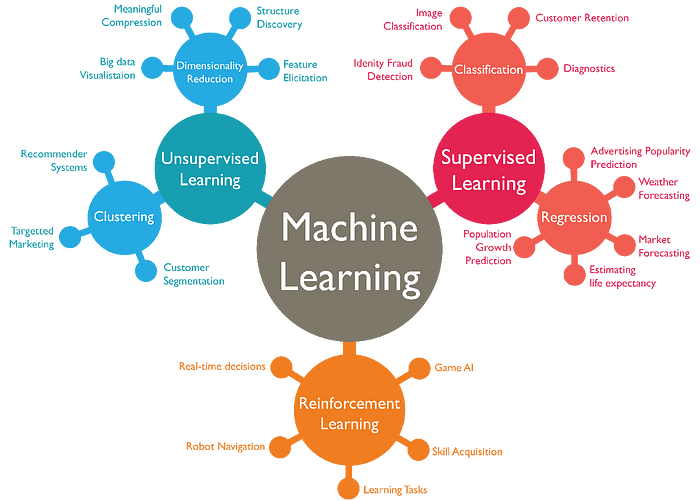Machine learning introduction - Machine Learning Group
Machine learning
Machine learning (ML) is currently one of the fast developing and dynamic fields of science. ML is included in our every day life - every Google search, online orders, social networks,... . In last years ML found it's part in medicine, astronomy, physics. In future we can expect even bigger involvement of ML in our lives as self driving cars!
Machine learning is a wide field, which includes various algorithms (Image 1). The ML algorithm can be divided into three min groups:
- Supervised Learning
- Unsupervised Learning
- Reinforcement Learning

Image 1: Example of ML algorithms. (Source)
Supervised Learning
This type of ML requires training datasets. The datasets have to contain input information (eg. image of galaxy) and ground truth or label (eg. elliptical galaxy). The algorithm has to be trained on the training dataset. A trained algorithm allows to make predictions about unseen data. Example of such algorithms are regression or neural networks.
Unsupervised Learning
In comparison with supervised learning, in this case we do not have labeled data or ground truth. Our dataset contains just input information. The algorithm has to find the structure on the data. The unsupervised learning can be beneficial in discovering hidden structure or patterns in the data. An example of such algorithm is clustering algorithms.
Reinforcement Learning
The goal is to train system based on interaction with dynamic environment. Environment provides feedback to the system in terms of rewards and punishment. The system can then use the reinforcement learning to learn a series of actions that maximise its reward. An example is a chess-playing engine.
This post was written with help from the following two sources:
Python Machine Learning (Sebastian Raschka)
Unsupervised Learning and Data Clustering
